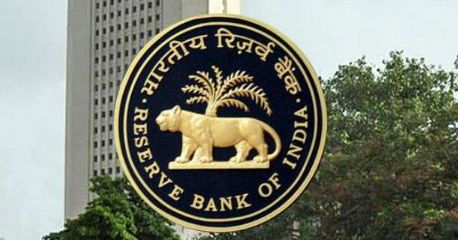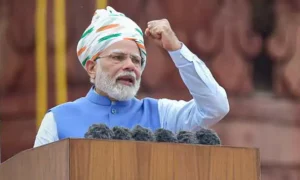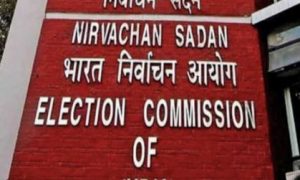The Reserve Bank of India’s ‘special’ decision to purchase state government bonds in the secondary market via open market operations (OMOs) will ensure that a likely further crowding of the market by revenue-scarce states in Q4 won’t inflate their borrowing costs to awkwardly high levels.
At least the 35 bps or thereabouts extra spread over normal times between 10-year state development loans and G-secs – as was found during auctions held on Tuesday – might get wiped out as a result of the move, market watchers say. They, however, added that exact impact of the RBI move would depend on the modalities to be worked out by the central bank and the quantum of OMOs in SDLs.
The Centre had earlier hinted at instituting a one-off mechanism to enable the states to reduce the interest costs on SDLs, given the unprecedented rise in their market borrowings this year due to the pandemic. A ‘special RBI window’ was offered to them to raise funds at “reasonable G-sec linked rates”, so as to bridge the states’ yawning GST revenue shortfall. Abundance of SDL issuances is already putting pressure on corporate bond yields.
According to rating agency Icra, state governments’ combined gross market borrowings may rise by 63% to about Rs 10.3 lakh crore in FY21 and net borrowings by 81% to Rs 9 lakh crore (4.77% of G-SDP). The Centre had earlier raised the ceiling for SDL issuances by 67% to Rs 10.69 lakh crore.
The expansion of the SDL size is despite the Centre itself scaling up its gross market borrowing by a steep 54% to `12 lakh crore for FY21.
“We will wait for the RBI to give more clarity on information on OMO size. I expect the spread between SDL and G-secs to come down by about 25 bps,” said Mahendra Jajoo, chief investment officer – fixed income at Mirae Asset Investment Managers (India). The moderation in SDL yields will also have positive impact on corporate bond yields, B Prasanna, head-global markets group at ICICI Bank, told CNBC TV18.
“The OMO will have a positive impact on future SDL issuances. Generally, the spread used to be around 50 bps between SDLs and G-secs, while in the last few months it has gone up to 80-90 bps,” India Ratings chief economist DK Pant said.
“This (OMOs in SDLs) would improve secondary market activity and rationalize spreads of SDLs over central government securities of comparable maturities,” the RBI said in its monetary policy statement on Friday. The central bank reckons that this step, coupled with the extension of held-to-maturity limit of banks – 22% of net demand and time liabilities – till March 2022, would allay the concerns over about illiquidity and market’s capacity to absorb the total government borrowings in the current year.
An additional tranche of fiscal stimulus is expected to be conservative in terms of its budgetary cost. The overall Budget size of the Centre might be retained at the budgeted level or below, via controls on various expenditures being exercised.
The spread between the 10-year SDLs and G-secs has widened to a 4 month high of 88 bps, CARE Ratings said in a recent note. The spread was even higher than 100 bps in April, before moderating on a string of measures including 60% enhancement in ways and means advances for states.
The weighted average yield of state government dated securities (across states and tenures) auctioned October 6 was at 6.80%, 23 bps higher than week ago and 31 bps higher than that in the first week of September. “There has been a near sustained increase in the cost of market borrowings across states. Maharashtra, Andhra Pradesh and Karnataka have seen their borrowing costs increase by an average 53 bps in the last one month,” CARE Ratings said.
“Given the exceptional circumstances of state government finances during the pandemic, especially the proposal to finance a large portion of GST compensation losses through borrowings in light of inadequate cess collections, the supply of state government bonds is expected to ratchet up sharply in Q4FY21,” Icra wrote. It projects the gross and net SDL issuances in Q4 at Rs 4.77 lakh crore and Rs 4.37 lakh crore, respectively.
The gross SDL issuance expanded by a substantial 56.8% to Rs 3.53 lakh crore in H1FY21 from Rs 2.25 lakh crore in H1FY20. The net SDL issuance rose by an even higher 91.4% on year in H1FY21 to Rs 3.02 lakh crore.
The Centre, in view of the Covid-19 pandemic, had in May allowed an additional net borrowing of up to Rs 4.28 lakh crore (2% of GSDP) to states for FY21. While 0.5 pecentage point (pp) of the extra borrowing window (Rs 1.07 lakh crore) is available to all states unconditionally, one pps was to be made available in four equal tranches with each to “clearly specified, measurable and feasible reform actions”. The balance 0.5 pp was to be accessed by states, subject to their ‘completely achieving’ the milestones in at least three out of four reform areas. Later, an offer was made by the Centre at the GST Council, whereby the Option 1 came with the incentive of (additional) 0.5 pp unconditional FRBM relaxation for states.



































